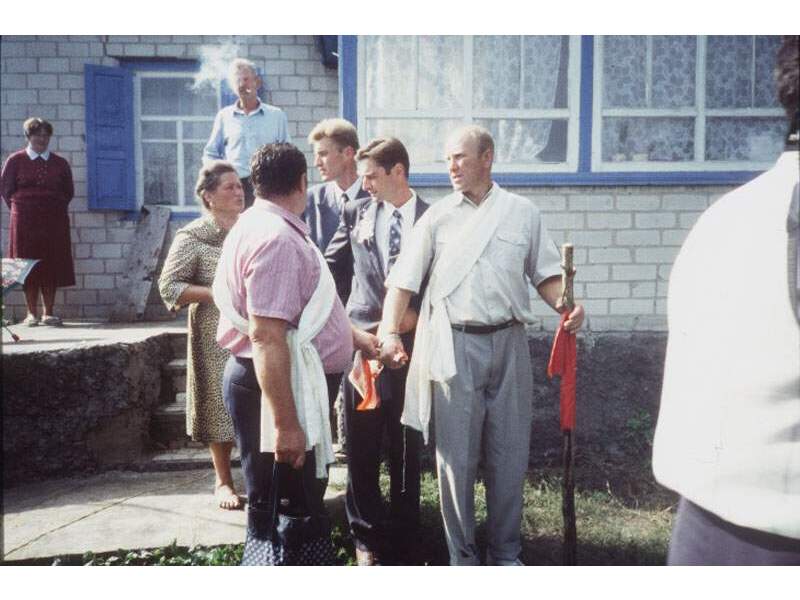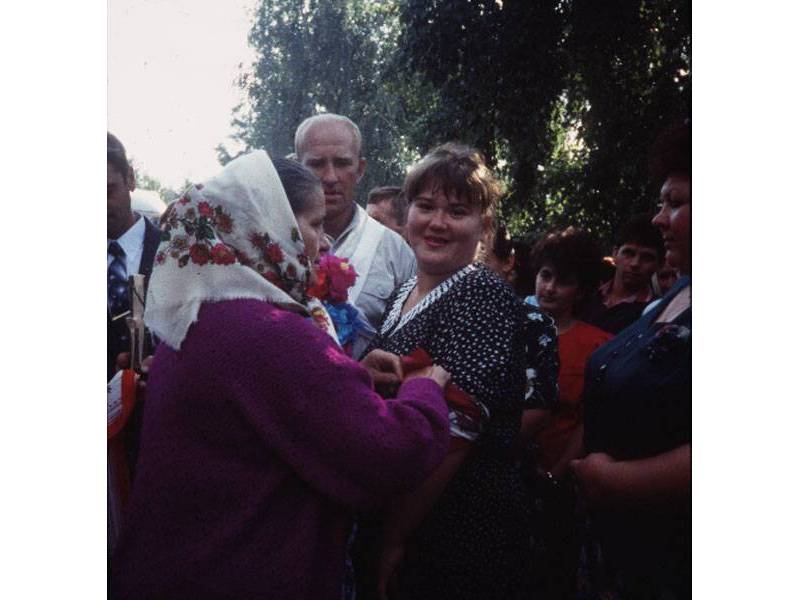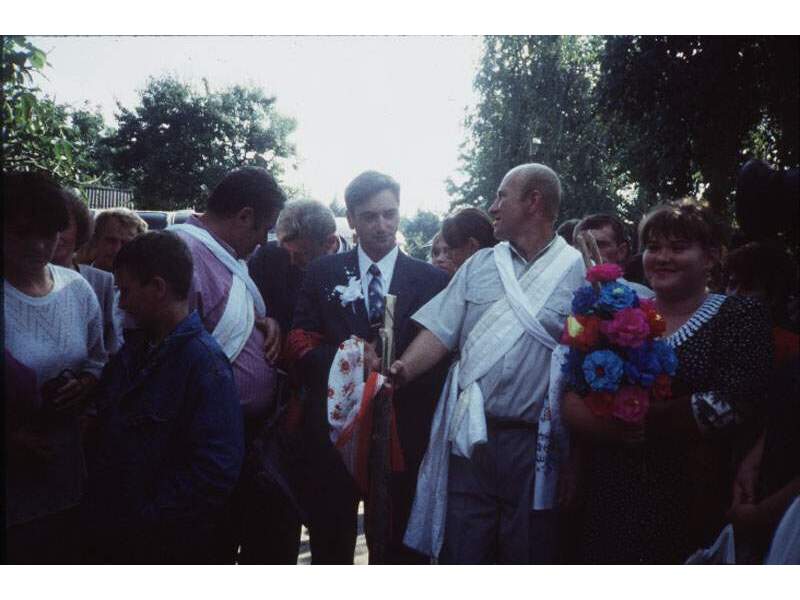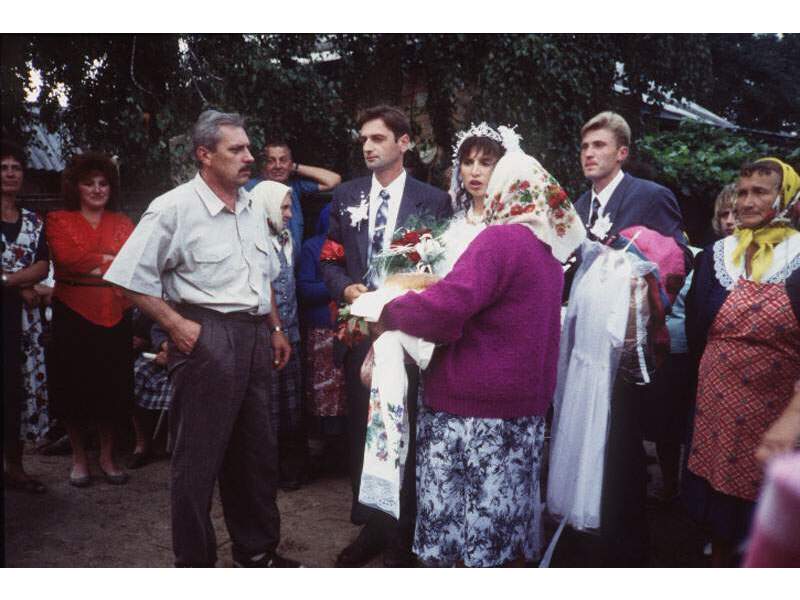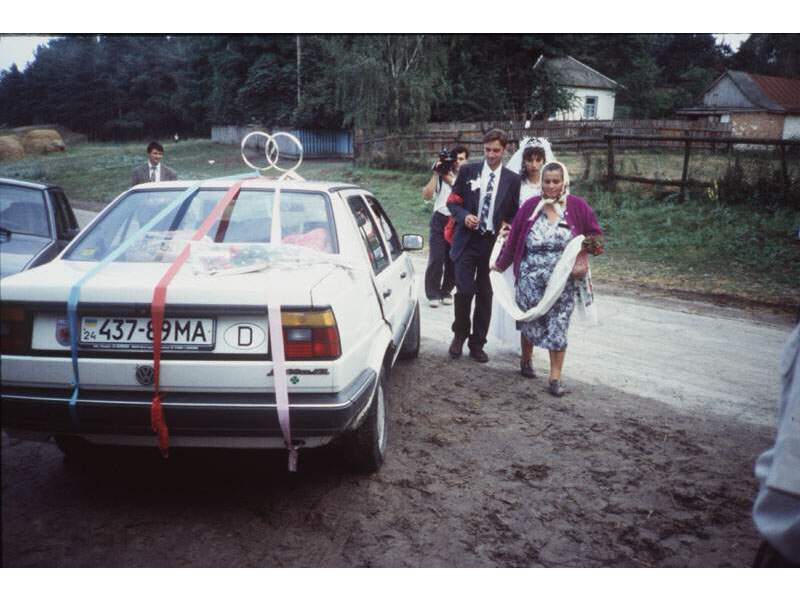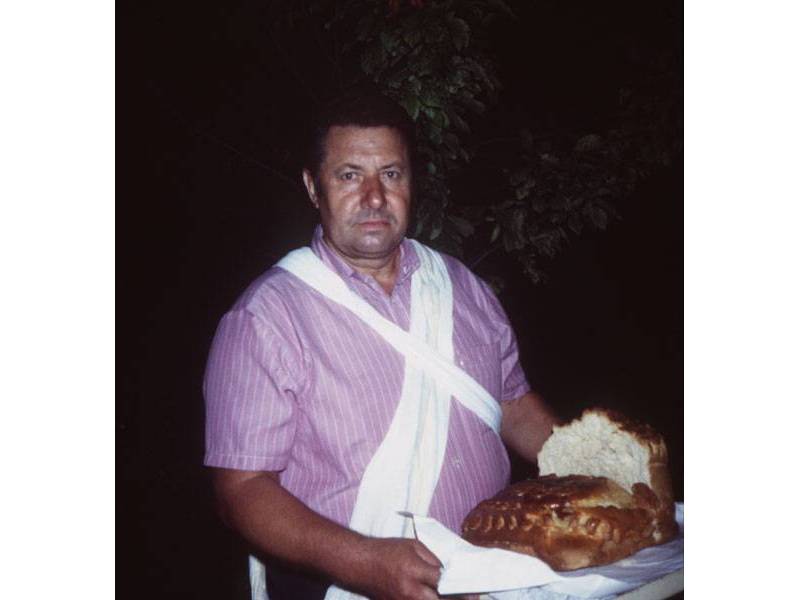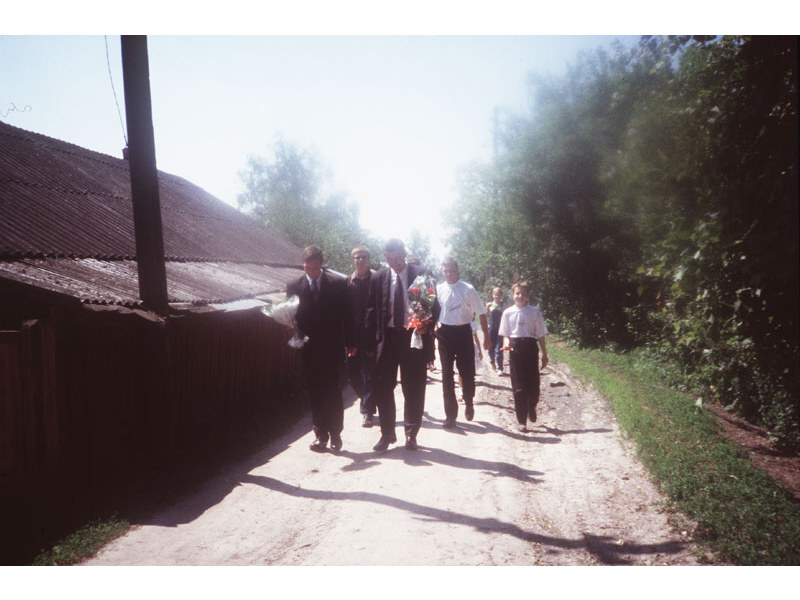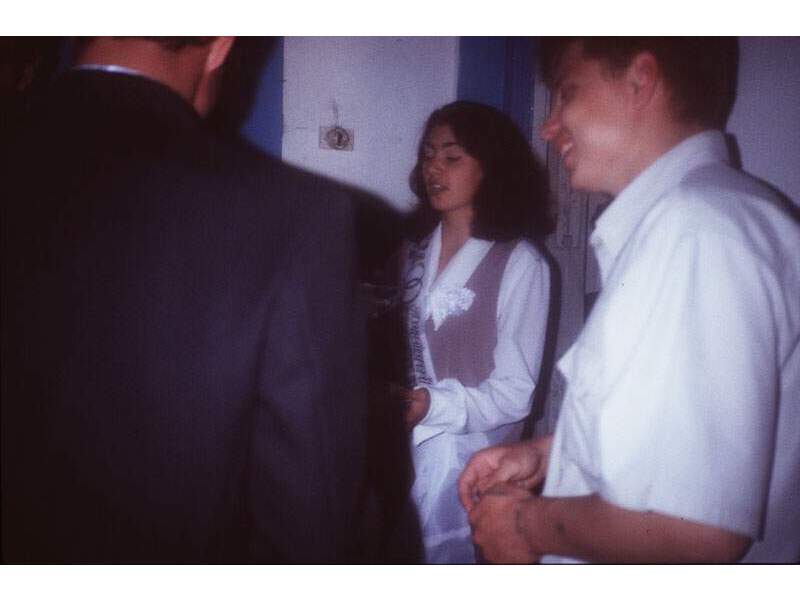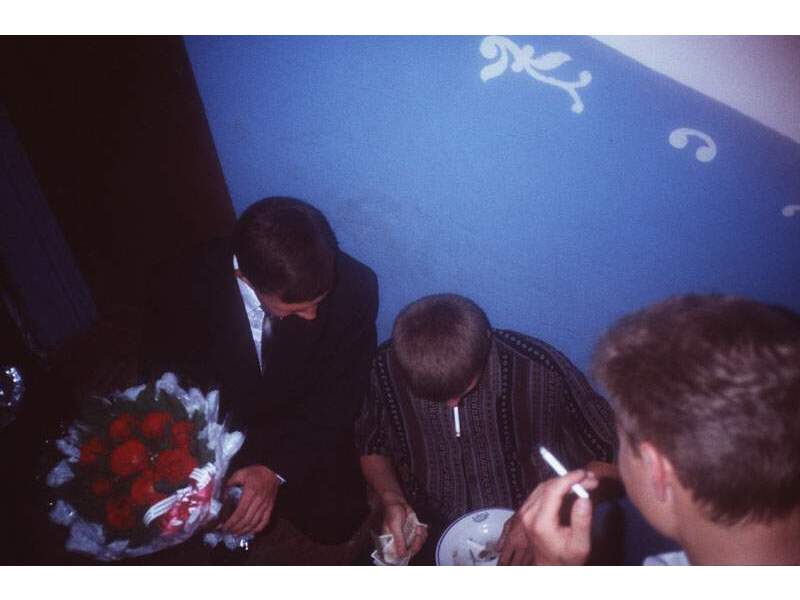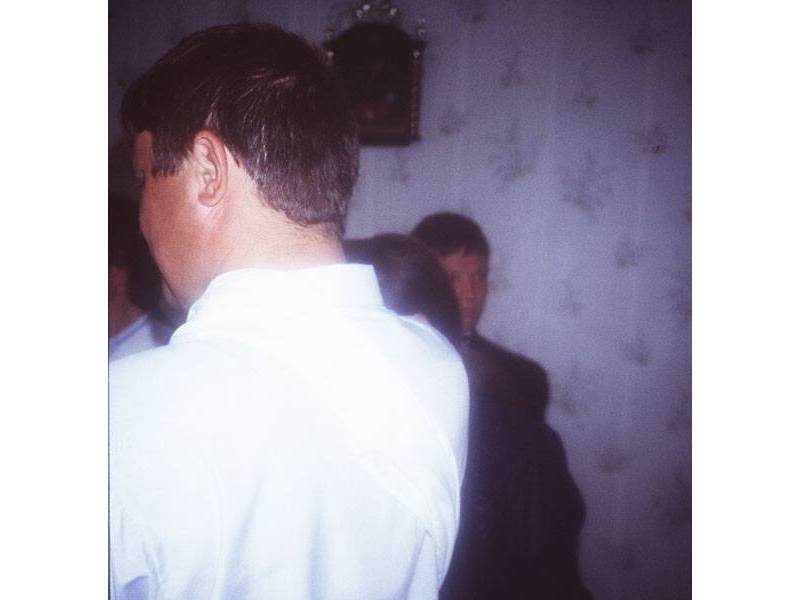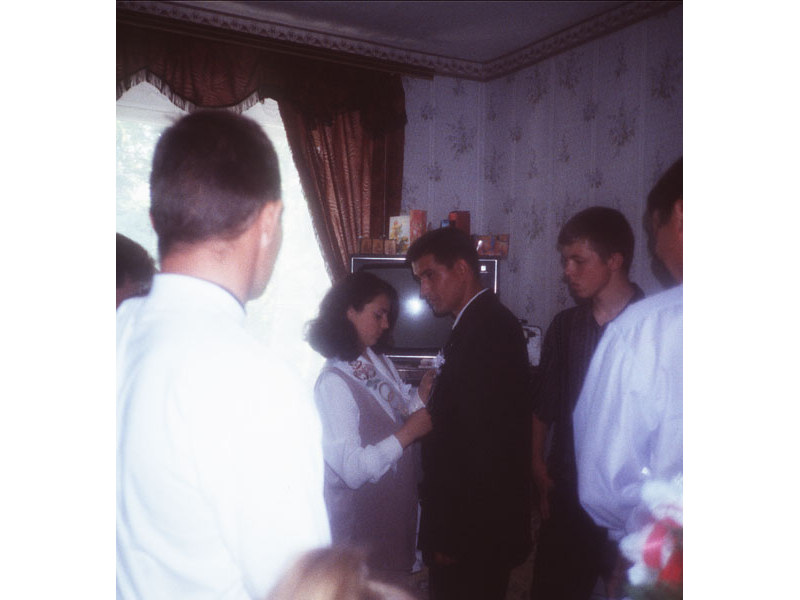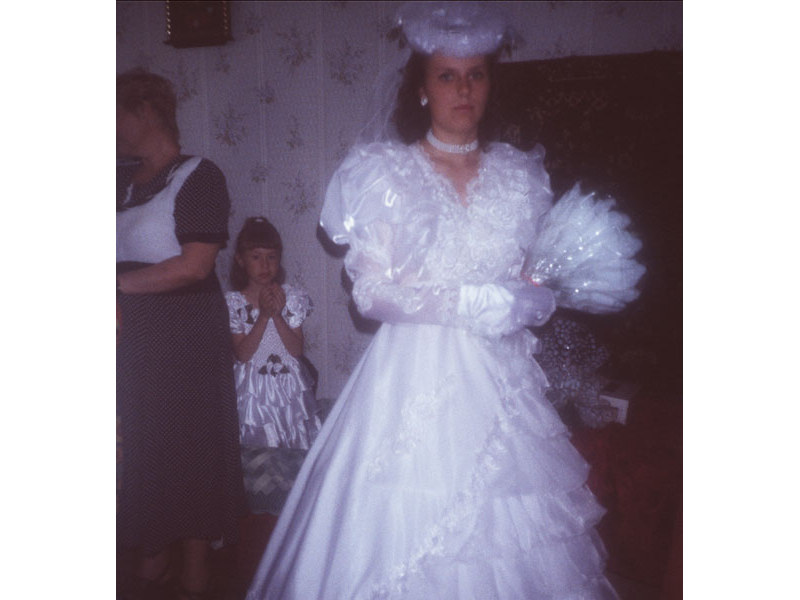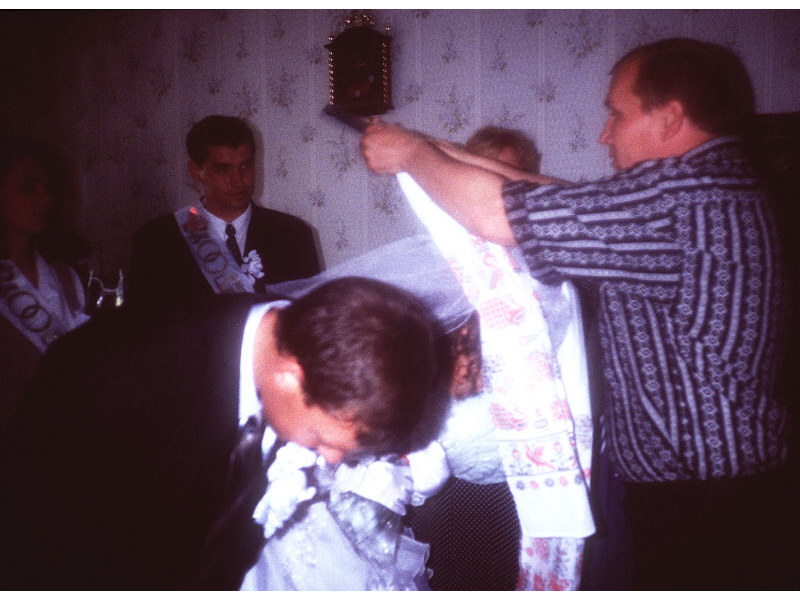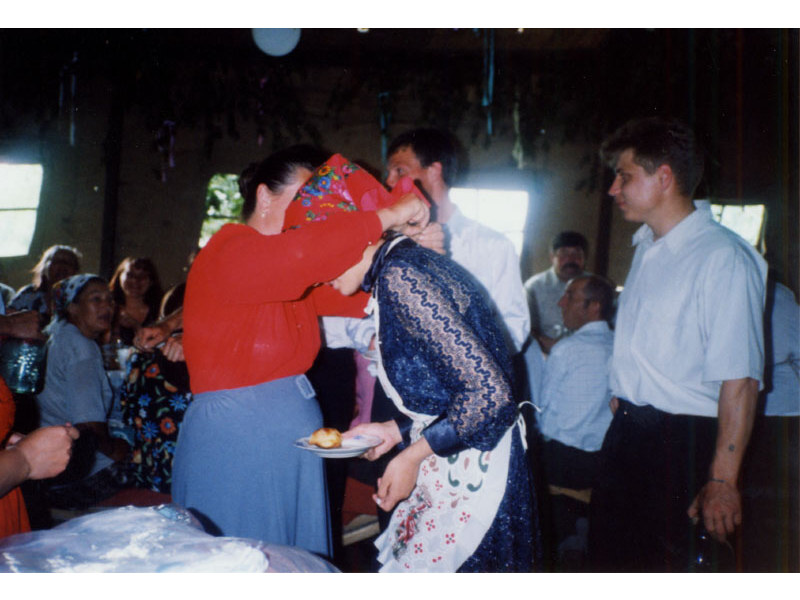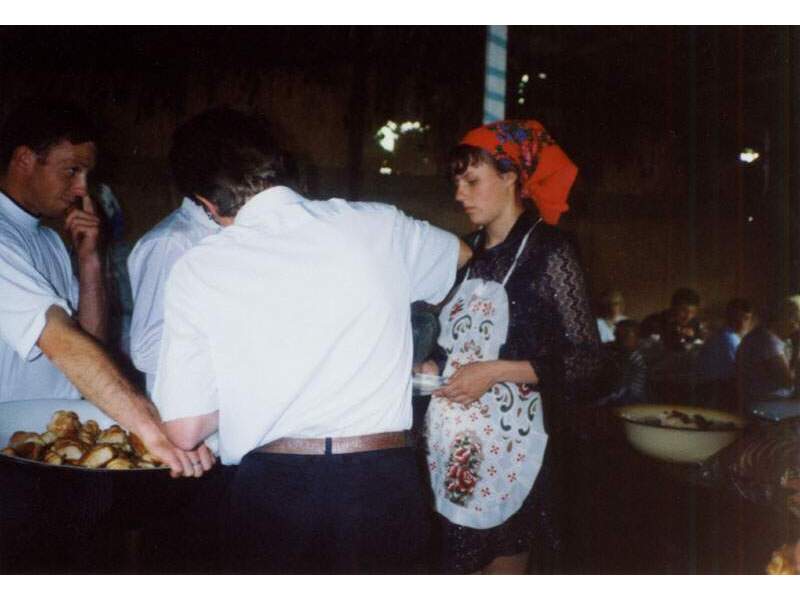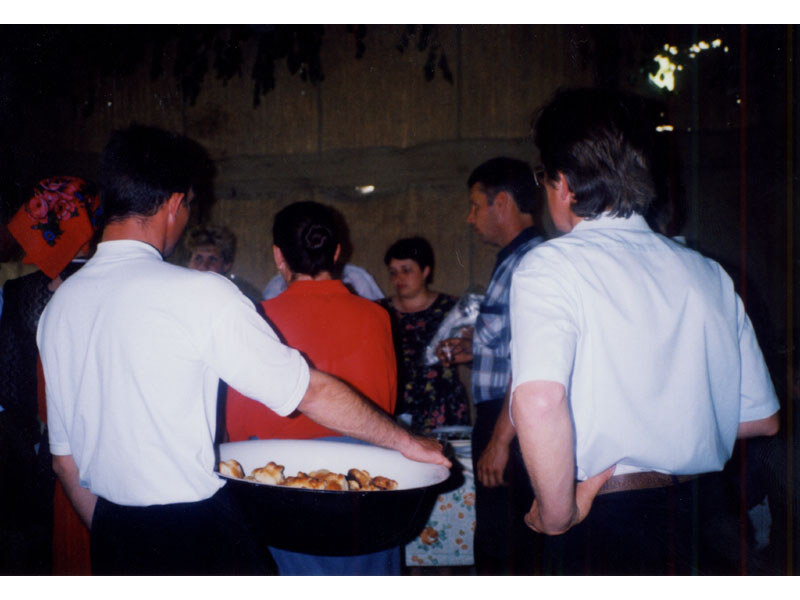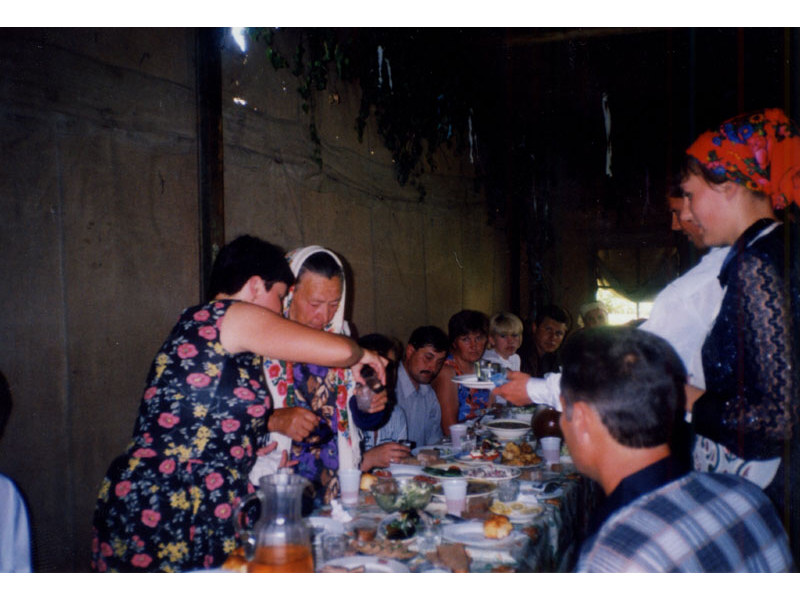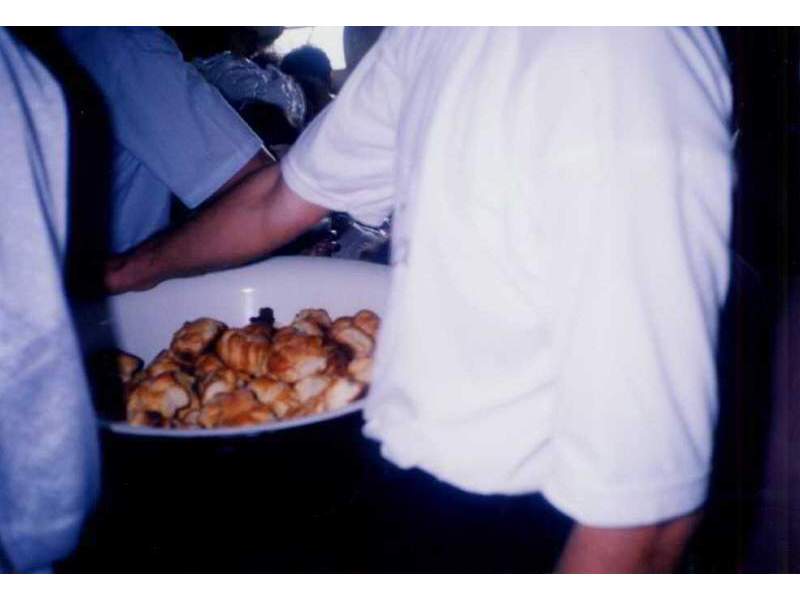The Folk Component
The folk component of the wedding is worked in around the civil and church ceremonies. Sometimes it follows the civil ceremony, as in Krut’ky and sometimes it precedes it, as in Mryn. Important components of the folk ceremony include a procession from the groom’s home to fetch the bride. The procession, called a poizd or train, has some of the nature of a military parade and the members of the poizd can have military titles. Older men, tied with rushnyky and carrying staffs walk in front. They are followed by the groom, the boiaryn, and the svitylka, a female relative of the groom. The bouquet the svitylka carries is called a shablia or sword. The groom’s mother dispatches the wedding train, showering them with coins, grain, and candy. Along the way, the bride’s friends stage mock attacks and demand horilka as payment. When the train reaches the bride’s home, they have to bargain with the bride’s druzhka and pay money or horilka to gain entrance. In the home, flowers are sewn onto the groom’s lapel and that of the best man.
It is important to note that, under most circumstances, separate celebrations occur at the home of the bride and the home of the groom. Only the wedding train goes back and forth between the two houses. The rest of the wedding guests stay at the home of the person who invited them. Because literally hundreds of people are invited by each side, the families of the couple set up outdoor tents so that they can seat all of their guests at the banquet. These can be canvas tents or make-shift structures with a wooden frame covered by plastic garbage bags.
Another import folk element is the braiding of the bride’s hair.
This occurs in the groom’s home, during the banquet following either the civil ceremony or the religious one. The braiding of the hair is the folk symbol of womanhood and after the braiding, the bride is considered a wife and, when in public, must wear her hair covered.
Gift-giving occurs at the banquet and is another important folk element. The presentation of gifts can be accompanied by songs or rhymes, some joking and off-color. The bride and groom thank their guests for the gifts and offer them each a drink and a piece of korovai in return.

